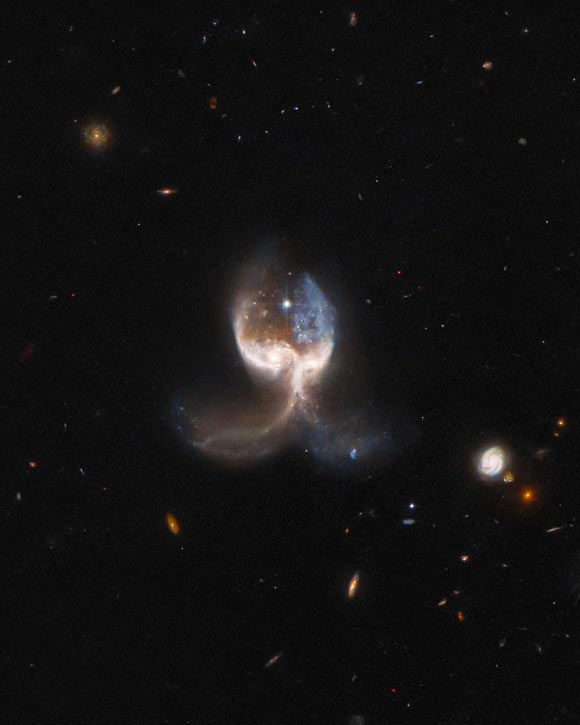A window into the future has been captured by the Hubble Space Telescope: a stunning view of two massive galaxies merging to form an object known as the Winged Angel.
This is the galaxy system named VV 689, resulting from the merger of two galaxies, IRAS F09588+2002 and LEDA 29031, both located in the constellation Leo.
The NASA/ESA Hubble Space Telescope has beautifully captured the view of VV 689 from Earth, showing the two galaxies in the process of merging by overlapping each other, creating an image resembling symmetrical wings. Thus, the scientific community has given it the beautiful nickname “Winged Angel.”

Stunning image of the “Winged Angel” galaxy – (Photo: NASA / ESA / HUBBLE)
According to Sci-News, this discovery comes from a collection of observations made by Hubble as part of the “Galaxy Zoo” project, involving hundreds of thousands of astronomy-loving volunteers tasked with analyzing data.
According to the Hubble operations team and the “Galaxy Zoo” project, the Winged Angel is one of the strangest galaxies recorded by the project. Such unusual and merging galaxies provide valuable data, including new insights into how galaxies merge—a process that has occurred and continues to occur in the galaxy that contains Earth.
Previously, studies have shown that the galaxy containing Earth—the Milky Way, also known as “Ngân Hà”—has undergone nearly 20 mergers to reach its current “monster” size. Due to its immense size and power, the Milky Way often “devours its victims.”
However, in about 2 billion years, a beautiful yet terrifying version of the Winged Angel may occur when the Milky Way directly confronts the Andromeda Galaxy, which is roughly the same size. This collision is expected to eject Earth from the habitable zone.

















































